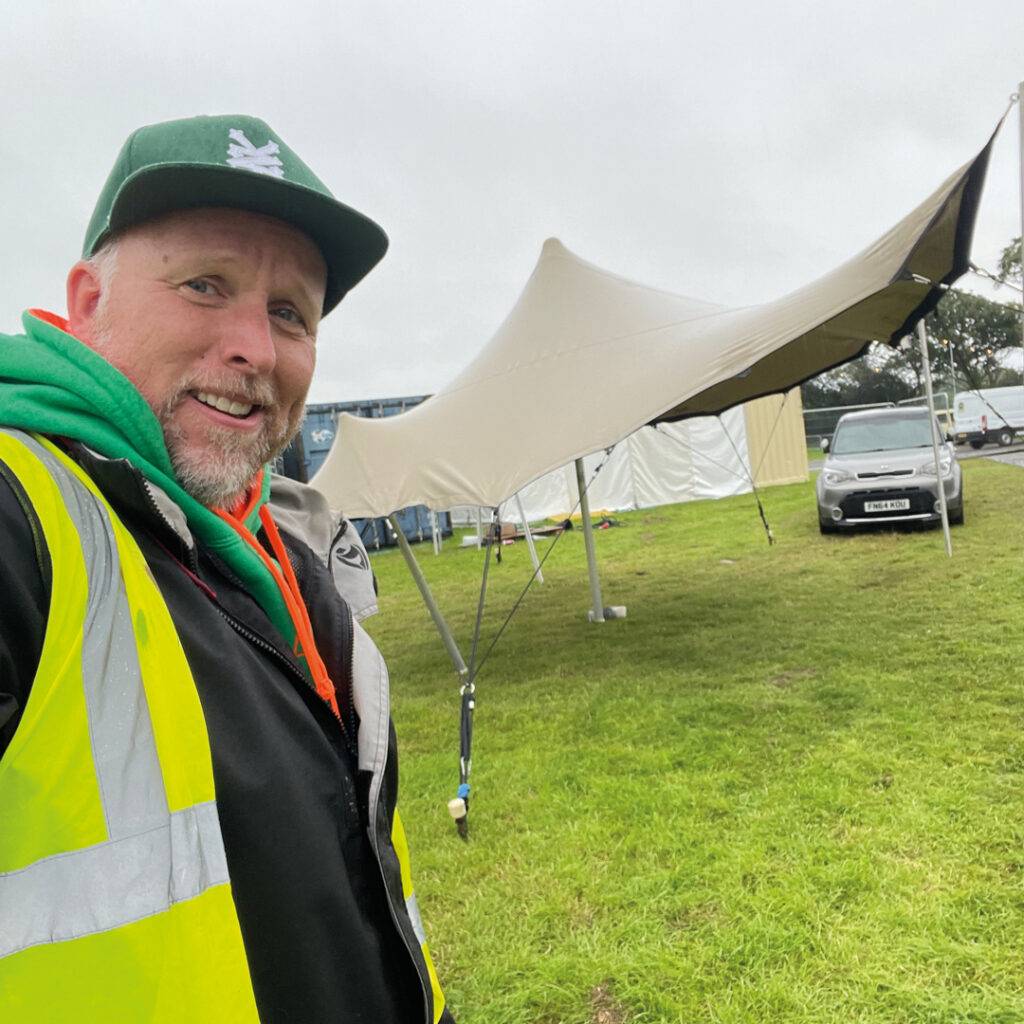Joe Heap, whose grandfather Denis Manners founded Towersey Festival in 1964, tells us what makes it so great
Towersey Festival, the UK’s oldest, independent music festival will deliver a new programme of comedy, word and song for its 60th anniversary.
The Comment and Comedy offering, curated by singer, writer and all-round creative Gavin Osborn, will offer comedy for families and grown-ups straight from Edinburgh Fringe, award-winning short films as well as fiction and non-fiction authors with tales to tell.
Festival director Joe tells us: “A passionate believer in the power of community and a natural leader and organiser, my Grandad took his passion for music and song and turned it into a village event. Just a gathering of locals and musicians really, it took place in his garden in that first year. It was the first of its kind, and very different to those mainstream festivals.”
Joe, pictured with his sisters Kathy and Mary, is a fan of all kinds of festivals. “I once went to an amazing metal festival (I was doing some site work for them). I was a little intimidated by the look of the crowd – lots of make-up, leather, tattoos, and piercings, which are not for me – and the music was so loud.
“But it turned out to be the friendliest audience and the most amazing community festival. Just like our folk and roots music crowd, the metal crowd really look out for each other. They make lifelong friends with their campsite neighbours and people dancing next to them and they understand what it means to be part of something bigger than themselves that takes them away from the stresses of everyday life. That’s what Towersey is. It’s community and escapism.”


Growing up, Joe says he enjoyed many amazing Towersey moments. “As a child I just remember the freedom I felt at the festival. Me, my sisters and our pals were able to run free and explore the site. It was, and still is, such an inclusive and friendly place and small enough for parents to feel secure letting their kids have the freedoms they don’t often get in life these days.
“I just remember the freedom I felt at the festival”
“And loads of amazing gigs. Being one of the first festivals to stage the might Bellowhead (possibly the first), but also those smaller, more intimate gigs that create magic moments every year. It’s this intimacy that makes us different, getting up close and personal to the artists.
“Finally, I must mention our incredible Ceilidhs – these are like a barn dance, for those who might not know. They are the most social and life-affirming events. Once you’ve experienced them you will never want to leave.”
Towersey is all set to take place 23rd-26th August on the Claydon Estate. This year’s line-up includes Billy Bragg, The Staves, Jamie Lawson, The London African Gospel Choir, Pokey Lafarge, axe-throwing, dance classes, workshops and more. Day passes from £65 for adults, £40 for 5-17 years (under fives go free). Visit Towersey Festival for more info.








